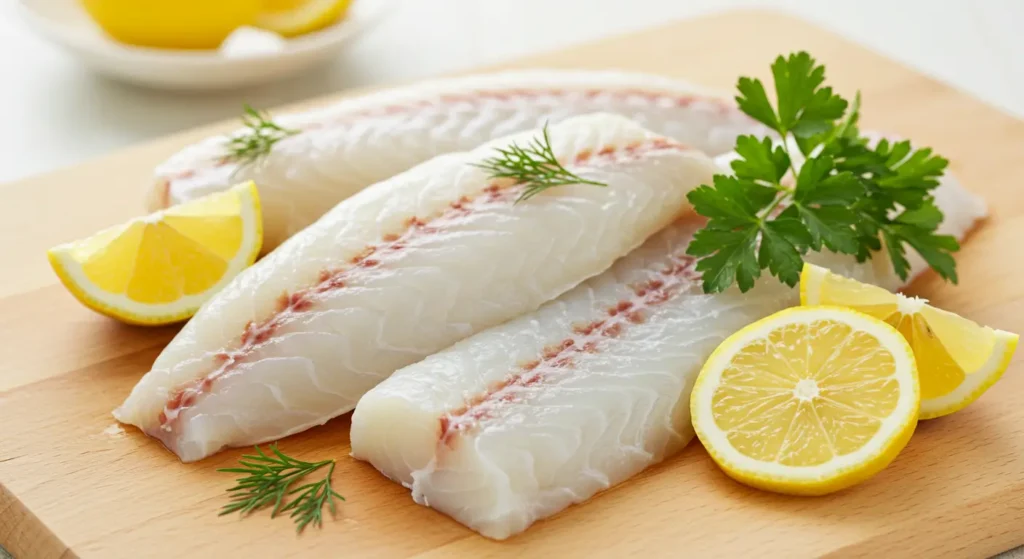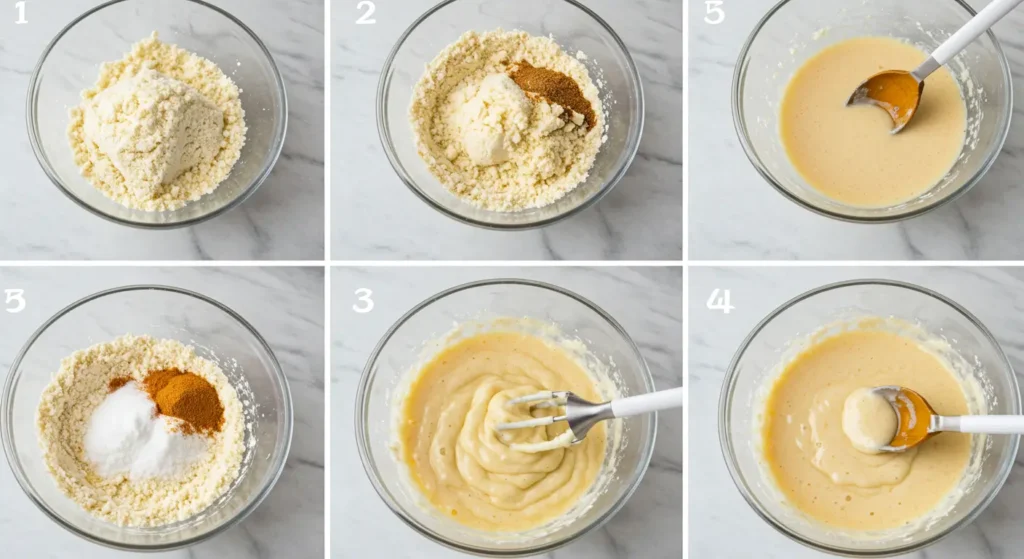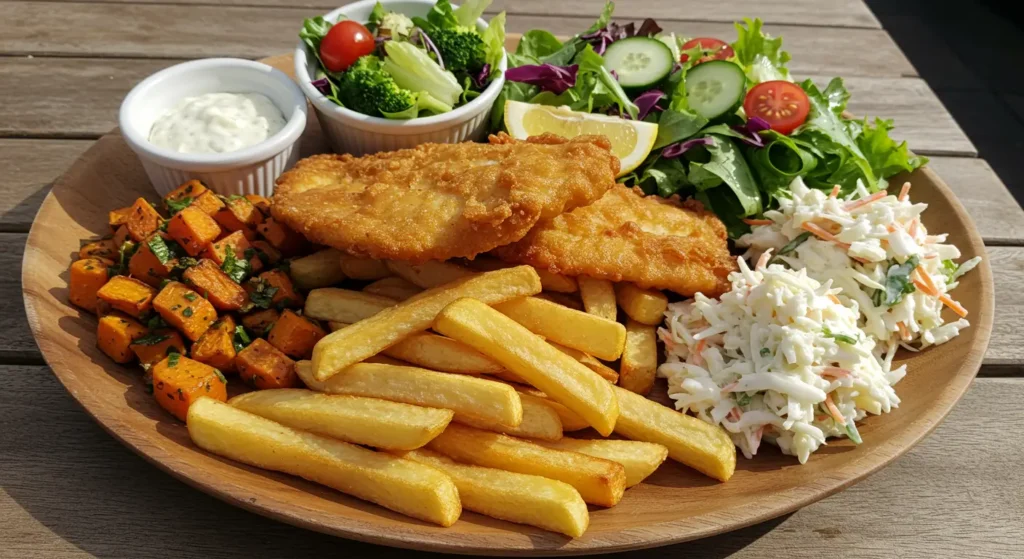Why Go Lectin-Free?
Adopting a lectin-free diet has gained popularity in recent years, largely due to its potential health benefits. Lectins are naturally occurring proteins found in many plants and some animal products. While they serve protective functions for plants, lectins can pose challenges for human digestion when consumed in large amounts. For some individuals, reducing or eliminating lectins from their diet may alleviate issues like bloating, inflammation, and digestive discomfort. Additionally, exploring lectin-free recipes, such as a lectin-free fish and chips recipe, can make the transition to this diet both enjoyable and delicious.
Ingredients for Lectin-Free Fish and Chips
Creating a lectin free fish and chips recipe requires simple substitutions to make this classic dish both delicious and compliant with dietary restrictions. The key is using high-quality ingredients that maintain the dish’s flavor and texture while eliminating lectins. Below is a list of ingredients to prepare this healthier version:
For the Fish:

- White fish fillets (e.g., cod, haddock, or halibut) – Fresh or sustainably sourced for the best taste.
- Almond flour or cassava flour – A lectin-free alternative for the batter.
- Arrowroot powder – Helps bind the batter for a crisp coating.
- Sea salt and black pepper – Key seasonings that bring out the dish’s flavors.
- Avocado oil – A type of oil with a high smoke point, making it perfect for frying.
For the Chips:
- Japanese sweet potatoes or rutabaga – Lectin-free substitutes for regular potatoes, offering similar texture and sweetness.
- Olive oil or avocado oil** – For roasting or frying the chips to perfection.
- Garlic powder and paprika – Optional seasonings for extra flavor.
Optional Additions:
- Lemon wedges – To brighten the dish with a splash of citrus.
- Homemade lectin-free tartar sauce – Combine mayonnaise, diced pickles, and fresh dill for a flavorful dip.
- Apple cider vinegar – For a tangy kick often paired with traditional fish and chips.
By using these ingredients, the dish retains its classic appeal while ensuring it aligns with a lectin-free lifestyle. These thoughtful substitutions make it easy to enjoy a nostalgic favorite without the unwanted dietary effects of lectins.
Step-by-Step Instructions for Cooking Lectin Free Fish and Chips
Preparing a lectin free fish and chips recipe at home is straightforward and rewarding. Follow these step-by-step instructions to achieve a perfectly crispy fish and golden chips without lectins.
Step 1: Prepare the Chips
- Preheat your oven to 400°F (200°C) if roasting the chips, or heat avocado oil in a deep skillet for frying.
- Peel and slice the Japanese sweet potatoes or rutabaga into thick, even strips. This ensures uniform cooking.
- Toss the slices with olive oil, garlic powder, paprika, and a pinch of sea salt. If frying, skip the oil tossing.
- For oven roasting: Arrange the chips on a baking sheet lined with parchment paper. Bake for 20–25 minutes, turning halfway through, until golden and crispy.
- For frying: Carefully place the chips into hot oil and fry until golden brown. Use a slotted spoon to remove the fish and set it on a plate lined with paper towels to absorb any extra oil.
Second 2: Prepare the Fish Batter

- In a mixing bowl, combine almond flour, arrowroot powder, sea salt, and black pepper. Gradually add sparkling water, stirring until a smooth batter forms. The consistency should be thick enough to coat the fish but not overly dense.
- Pat the white fish fillets dry with a paper towel to remove excess moisture.
Step 3: Fry the Fish
- Heat avocado oil in a deep frying pan or skillet over medium-high heat. The oil should be heated but not to the point of smoking.
- Coat each fish fillet thoroughly by dipping it into the batter. Gently shake off any excess batter.
- Place the battered fish into the hot oil and fry for 3–4 minutes on each side, or until the coating is golden and crispy. Use tongs to turn the fish carefully.
- Once fried, transfer the fish to a plate with paper towels to absorb the excess oil.
Step 4: Assemble and Serve
- Plate the chips alongside the crispy fish.
- Garnish with lemon wedges and serve with lectin-free tartar sauce or apple cider vinegar for dipping.
- Enjoy your homemade lectin free fish and chips recipe fresh for the best flavor and texture.
This method combines traditional cooking techniques with lectin-free ingredients to deliver a satisfying and healthy meal that doesn’t compromise on taste.
Selecting the Right Fish For Lectin Free Fish and Chips
Choosing the perfect fish is crucial for preparing a lectin free fish and chips recipe that is both delicious and satisfying. The type of fish you select directly impacts the dish’s flavor, texture, and overall success. Here’s what to consider:
Best Fish for Lectin Free Fish and Chips
- Cod – Cod is a classic choice for fish and chips, prized for its mild flavor and flaky texture. It absorbs seasonings well and creates a light, tender bite beneath the crispy batter.
- Haddock – Slightly sweeter than cod, haddock is another excellent option. Its firm texture holds up well to frying, making it a popular choice for traditional recipes.
- Halibut – For a premium experience, halibut offers a rich, meaty texture and subtle flavor. It’s ideal for those seeking a more upscale take on this dish.
- Pollock – A budget-friendly alternative, pollock provides a similar flaky texture and mild taste, perfect for keeping the dish affordable without sacrificing quality.
What to Avoid
- Avoid oily fish such as salmon or mackerel, as their strong flavors and high fat content don’t complement the dish.
- Ensure the fish is boneless and skinless for ease of preparation and better texture.
Freshness is Key
- Always choose the freshest fish available. Fresh fish should have a mild scent, moist flesh, and a firm texture. Avoid fish with a fishy odor or slimy surface.
- If fresh fish isn’t accessible, high-quality frozen fillets are a suitable alternative. Make sure the fish is completely thawed and patted dry before cooking.
Selecting the right fish ensures your lectin free fish and chips recipe achieves the perfect balance of flavor and texture, making it a meal to remember.
Tips for Perfecting Lectin-Free Fish and Chips
To make your lectin free fish and chips recipe truly exceptional, attention to detail is key. With the right techniques and a few smart adjustments, you can achieve the perfect balance of crispy fish, golden chips, and flavorful seasonings. These tips will guide you in perfecting the dish:
1. Choose the Right Flour for the Batter
When making the batter for your fish, selecting the right flour is essential for texture and crispness. Almond flour and cassava flour are excellent gluten-free, lectin-free options. Combining both creates a light, crunchy coating. For the best results:
- Use a mixture of almond flour and cassava flour to achieve a crispy, golden finish.
- Ensure the batter is thick enough to coat the fish but not too heavy, as it can become greasy when fried.
2. Use Sparkling Water for a Light, Crispy Batter
Sparkling water or club soda helps create a light and airy batter. The carbonation causes the batter to puff up, making it crispier when fried.
- For an even lighter batter, refrigerate the sparkling water before mixing it into the flour. This helps maintain the batter’s crispiness during frying.
3. Preheat the Oil Properly
Whether frying or baking, temperature control is crucial. If you’re frying, make sure the oil reaches the right temperature (around 350°F/175°C) before adding the fish.
- If the oil is too cool, the fish will absorb excess oil, resulting in soggy, greasy fish.
- Use a thermometer to monitor oil temperature, ensuring it stays consistent during frying.
4. Pat the Fish Dry Before Coating
To achieve the perfect crispy exterior, it’s important to remove excess moisture from the fish before dipping it in the batter. Gently blot the fillets with a paper towel to remove any moisture. This step helps the batter adhere better and prevents oil splattering.
5. Roast the Chips for Maximum Crispiness
When preparing the chips, ensure they are cut evenly to ensure uniform cooking. Use Japanese sweet potatoes or rutabaga for their similar texture to regular potatoes without the lectins.
- For extra crispiness, cut the chips into thick, even pieces. Thin slices tend to become soggy more easily.
- Don’t overcrowd the baking sheet. Leave space between the chips so they can crisp up evenly in the oven.
6. Use Quality Oil for Frying
Choose oils with a high smoke point, such as avocado oil or coconut oil. These oils are not only ideal for high-heat cooking but also provide a healthy alternative to conventional frying oils.
- Avocado oil adds a mild flavor and is rich in heart-healthy monounsaturated fats.
- Ensure the oil is fresh and not reused multiple times, as it can break down and affect the taste of your dish.
7. Add Flavor with Seasonings
Seasonings can elevate your lectin free fish and chips recipe without relying on lectin-filled ingredients. Consider:
- Garlic powder, onion powder, paprika, and dried herbs to enhance the flavor of the fish and chips.
- A sprinkle of sea salt on the fish right after frying helps balance the flavors and adds a burst of taste.
8. Serve Immediately for Best Texture
To enjoy your fish and chips at their best, serve them immediately after cooking. The crispiness of the fish and chips diminishes as they cool, so it’s important to enjoy them fresh out of the oil or oven.
By following these tips, you can create a lectin free fish and chips recipe that’s crispy, flavorful, and satisfying, offering the perfect balance of health-conscious choices and delicious comfort food.
Serving Suggestions and Toppings For Lectin Free Fish and Chips

Once you’ve perfected your lectin free fish and chips recipe, the fun continues with serving and topping options that can elevate the dish even further. Whether you prefer a traditional approach or want to experiment with modern twists, these serving suggestions and toppings will help you create a memorable meal.
Classic Pairings
- Lemon Wedges – A simple squeeze of fresh lemon over the fish adds a burst of tangy flavor that complements the crispy coating.
- Tartar Sauce – For a traditional touch, pair your fish with a homemade lectin-free tartar sauce. Combine mayonnaise, dill, chopped pickles, and a squeeze of lemon for a creamy and tangy dip.
- Malt Vinegar – A classic British touch, malt vinegar adds a sharp acidity that cuts through the richness of the fish and chips. It’s a must for many fish-and-chips lovers.
Creative Toppings and Sauces
- Avocado Slices – For a creamy addition, avocado slices provide a fresh contrast to the crispy fish. The richness of avocado also balances the tanginess of lemon or vinegar.
- Cucumber and Dill Salad – A light, refreshing side salad of thinly sliced cucumber, dill, and a drizzle of olive oil pairs beautifully with the fish, offering a cooling contrast to the hot, crispy fish and chips.
- Chimichurri Sauce – For a bold twist, try chimichurri, a tangy sauce made from parsley, garlic, vinegar, and olive oil. It adds an herbaceous punch that brightens up the dish.
- Homemade Aioli – A garlicky, creamy aioli made from lectin-free mayonnaise, garlic, and lemon is another excellent choice for dipping the crispy fish.
Sides and Accompaniments
- Roasted Vegetables – Serve your fish and chips with a side of roasted vegetables like broccoli, carrots, or zucchini. These vegetables not only add nutritional value but also provide a lighter, fresher complement to the fried dish.
- Mixed Greens Salad – A simple salad of leafy greens, such as arugula or spinach, dressed in olive oil and balsamic vinegar, can add a refreshing contrast to the richness of the fish and chips.
- Coleslaw – A tangy, crunchy coleslaw made from shredded cabbage, carrots, and a lectin-free dressing is a perfect side dish. The crunchiness and acidity balance the dish’s richness.
Serving Tips
- Serve on a Newspaper-Lined Plate – For a traditional touch, serve your fish and chips on a plate lined with parchment paper or newspaper for a nostalgic presentation.
- Keep Everything Hot – Serve your fish and chips immediately after cooking while they’re at their crispiest and freshest. If serving in batches, keep the cooked items in a warm oven to maintain their crisp texture.
By adding these serving suggestions and toppings, you can customize your lectin free fish and chips recipe to suit your taste, creating a dish that is both satisfying and delicious. Whether you stick to the classic or try something new, these additions will elevate your meal and make it even more enjoyable.
For more delicious and healthy meal ideas, check out this One-Skillet Cheesy Ground Chicken Pasta Recipe.
FAQ About Lectin Free Fish and Chips
What Are the Best Dips for Lectin-Free Fish and Chips?
The best dips for lectin free fish and chips include homemade tartar sauce, avocado aioli, lemon wedges, and malt vinegar. These complement the crispy fish and chips while adding refreshing or tangy flavors.
Can You Make This Dish Gluten-Free as Well?
Yes, this lectin free fish and chips recipe is naturally gluten-free when you use almond flour or cassava flour for the batter. It’s a perfect option for those avoiding both lectins and gluten.
Best Lectin-Free Fish and Chips Recipe
The best lectin free fish and chips recipe uses white fish like cod, almond flour or cassava flour for the batter, and sweet potatoes or rutabaga for the chips. Fry in avocado oil or bake for a lighter option.

1 thought on “Lectin Free Fish and Chips Recipe for a Healthier Meal”